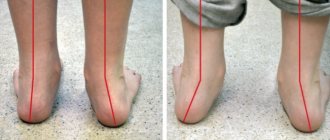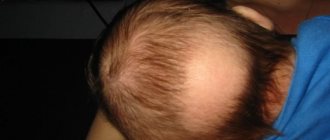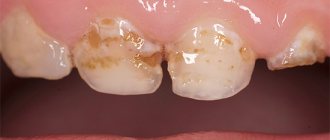Causes of measles
Measles is one of the most contagious diseases. The infection is transmitted by airborne droplets.
A person who is not immune to measles will almost certainly become ill when exposed to the infection, regardless of their age. In order to get sick, it is not necessary to have direct contact with a carrier of the infection; you can become infected, for example, by entering the room where he was recently located. There are known cases of the measles virus spreading over significant distances with air flow. But at the same time, the virus is not stable in the external environment; it quickly dies outside the human body from exposure to various chemical and physical factors (irradiation, boiling, treatment with disinfectants).
The incubation period of measles ranges from 7 to 14 days. The source of infection is a patient with measles in any form. The patient is contagious to others, starting from the last days of the incubation period (last 2 days) until the 4th day of the rash. From the 5th day of the rash, the patient is considered non-infectious.
Measles in children
Measles in children is an acute infectious disease accompanied by fever, manifestations of intoxication, catarrh (inflammation) of the upper respiratory tract and mucous membranes of the eyes, and a maculopapular rash. Measles can be complicated by meningitis, encephalitis, pneumonia, intestinal diseases, etc.
Epidemiology
Until there were vaccinations to prevent measles, this disease was found in every country on the globe. It could easily be called the most widespread on earth. Every 2 years, a new increase in incidence was recorded, because each of this period accumulated a sufficient number of adults and children susceptible to measles. The incidence did not decrease in any of the seasons; increases were recorded in winter, spring and autumn.
The source of measles infection is a sick person. During the catarrhal period, patients with measles are especially contagious (also on the first day of the appearance of the rash). This is the period of the disease when changes occur in the mouth of the infected child. On the third day of illness, children become significantly less infectious. After the fourth day from the moment the rash appears, you can contact the patient without fear of becoming infected. During the last days of the incubation period of a person infected with measles, those around them have a high chance of becoming infected.
There is also mitigated measles, a mild form of the disease in which the symptoms are mild and the rash is scanty. But you can also get infected from a patient with mitigated measles.
The infection is transmitted by airborne droplets. The measles virus enters the external environment from the upper respiratory tract during coughing and sneezing with droplets of mucus. It spreads through the air throughout the apartment/house, ending up in neighboring rooms. He can cross corridors, so there is a high risk of infection if the patient is even in the next apartment. Through the ventilation or heating system, the measles virus can “migrate” to the upper floors of apartment buildings. The virus is transmitted extremely rarely through third parties, because it tends to die while outside human bodies.
People (including children) are highly susceptible to measles. 95-96% of people contract an infection upon contact with a sick person. If measles is introduced into territories where there have been no measles epidemics for a long time and where vaccine prevention has not been carried out, in such cases a large part of the population in these territories becomes ill.
When a child has had measles, he develops a stable immune system. A very small percentage of children get measles again. Until the measles vaccine was invented, the vast majority of children under 10 years of age had measles. Children 1-5 years old are susceptible to this disease. Newborns up to 6 months of age become ill in rare cases. But after 3 months of life, immunity decreases significantly, and after 9 months, immunity disappears in 100% of children.
Only those newborns whose mothers did not have measles in childhood can become infected. There is also a chance of infection in the baby in the womb if the mother contracts measles during pregnancy. In recent years, immunization against measles has been carried out en masse, which is why adults who have lost immunity or who have not previously been vaccinated are more often infected with this disease.
Classification
Measles is divided into typical and atypical. Typical measles is expressed in all the symptoms characteristic of this disease.
Typical measles is divided into three forms:
- easy
- medium-heavy
- heavy.
With atypical measles, symptoms appear mild, and some may not appear. The duration of periods of illness may vary. The period of the rash may be shortened, the catarrhal period may be absent, and the stages of the rash may be disrupted.
Mitigated is a form of measles in which the symptoms are erased or very mild. This form affects children who received immunoglobulin at the beginning of the incubation period. With mitigated measles, the body temperature is normal or subfebrile. Belsky-Filatov-Koplik spots may be absent. The rash with mitigated measles in children is not abundant and small, and can appear in only a few areas. Catarrhal phenomena may be mild or absent. If a child is infected with measles before 6 months of life, he often has an erased form of the disease.
Atypical measles is characterized by very pronounced symptoms (hemorrhagic, hypertoxic, malignant). But they are rare. If a child has been vaccinated with live measles vaccine, but no antibodies have formed in his blood, his disease has a typical course with standard clinical manifestations. The manifestations are erased if there is a small amount of antibodies in the blood serum.
Measles can have complications that appear during any period of the disease. They most often mean that secondary microbial flora has joined. Only complicated measles that is not treated in time leads to death. Complications in most cases are associated with the respiratory system - laryngotracheobronchitis, laryngitis, pneumonia. With the appearance of the rash, laryngotracheitis and laryngitis that appeared in the prodromal period (the period between the incubation period and the disease itself) disappear. They are caused by the viral measles process and are catarrhal in nature.
During the period of pigmentation (appearance of a rash), fibrinous-necrotic, necrotic, ulcerative laryngitis and laryngotracheitis may occur. But sometimes they appear at the beginning of the disease. They have a long course, sometimes wave-like, accompanied by loss of sonority of the voice and a pronounced narrowing of the larynx. This is a viral-bacterial complication.
During any period of measles disease, pneumonia can occur. In the period between the incubation period and the disease itself, early pneumonia may occur, which differs little from changes in the lungs associated with disorders of the lymph and blood circulation caused by the measles virus. Such changes are called “pulmonary measles” or “lung measles.”
A more severe course occurs in early-onset pneumonia. They are characterized by severe intoxication. The patient's central nervous system and medial vascular system are affected. Physical changes in the lungs may not be pronounced.
Early pneumonia is similar in course to bronchopneumonia with a tendency to merge foci. Late pneumonia due to measles occurs in most cases during the period of pigmentation of the rash (after 4-5 days from the onset of the rash). Nowadays, antibiotics can ensure a smooth course of pneumonia and rapid resolution. In recent years, empyema and abscesses due to measles have practically never occurred.
Otitis media is considered a common complication of measles . In recent years, these have been catarrhal otitis (purulent otitis has become very rare). This complication occurs along with the onset of skin rashes.
Keratitis is considered a rare complication of measles. Children who have vitamin deficiency or dystrophy, as well as those who have poor eye care, are prone to it.
Such complications of measles as serous meningitis and encephalitis are characterized by a severe course and high mortality. There are rare cases when measles is complicated by encephalomyelitis with severe paraplegia and other symptoms of spinal cord damage.
Measles symptoms
The disease, if it develops in accordance with the typical picture, passes through three stages: catarrhal, the period of eruptions and the period of pigmentation.
In children under the age of one year, measles can occur in an erased form, since during this period the child has passive immunity received from the mother’s body.
Catarrhal stage
The onset of the disease is sudden, with symptoms reminiscent of a cold.
The temperature rises – up to 38-39°C. Headache, runny nose, conjunctivitis, dry and obsessive cough appear. Redness of the throat is observed, red spots appear on the hard and soft palate. The voice becomes hoarse. 1-2 days after the onset of the disease in the mouth, small whitish spots appear on the mucous membrane of the cheeks near the molars, surrounded by a narrow red border, slightly rising above the level of the mucous membrane. In appearance they resemble semolina or bran.
By the end of the first stage, the temperature decreases.
Period of rash
At the second stage (usually the 4th or 5th day of illness), the temperature rises again - up to 39-40 ° C and a rash appears: first on the face, neck, behind the ears. The next day - on the torso. On the 3rd day of the rash, the rash covers the extensor surfaces of the arms and legs, including the fingers. The rash has a dark red (purple) color, the elements of the rash merge. The affected skin becomes rough. The period of rash is the most severe stage of the disease.
On the fourth day after its appearance, the rash begins to fade away - in the same order as it appeared. The rash darkens, turns brown, becomes pigmented, peels off, and the temperature returns to normal.
Pigmentation period
Brown scaly spots at the site of the rash persist for another 1.5 weeks. This is the third stage of the disease - the period of pigmentation.
Murmansk city children's clinic No. 1
Measles is an acute infectious disease, the distinctive features of which are a typical rash, as well as damage to the conjunctiva of the eyes and the mucous membranes of the upper respiratory tract.
Nature, development and spread of infection Measles is a viral infection spread by airborne droplets. The measles virus enters the body through the mucous membrane of the upper respiratory tract, from where it spreads through the blood throughout the body. The virus selectively damages cells of the skin, mucous membranes of the eyes, respiratory tract and oral cavity, which causes typical manifestations of the disease.
The source of measles infection is only a sick person capable of releasing the virus into the external environment starting from the last two days of the incubation period and ending on the fourth day after the onset of the rash. People who have not received a prophylactic measles vaccination and have not had measles remain susceptible to infection throughout their lives, so the disease can develop at any age.
Before the widespread use of the measles vaccine, 95% of cases occurred in children under 16 years of age. After widespread vaccination of children, a significant decrease in the incidence of measles was noted, but isolated cases and limited outbreaks were constantly observed, and currently there is a tendency towards their increase. Full protection against measles requires immunization of 94–97% of children by 15 months of age. However, this level of vaccination is practically impossible even for developed countries.
Outbreaks of measles can also occur among vaccinated individuals (67-70% of all outbreaks). As a rule, they are typical for older age groups (school-age children, teenagers, military personnel, students, etc.). The nature of such cases of the disease is associated with a drop in immunity after a long period (10-15 years) after vaccination.
Signs and course of the disease The duration of the latent period of infection is 9-11 days. Administration of immunoglobulin for prophylactic purposes can help prolong it to 15-21 days (sometimes more). From the second half of the latent period, initial symptoms of the disease may be observed (decreased body weight in a child under one year old, evening low-grade fever, slight cough and runny nose, swelling of the lower eyelid, redness of the conjunctiva).
The initial nonspecific period begins with an increase in body temperature to 38-39 ° C, weakness, lethargy, and decreased appetite are noted. The cough takes on a rough “barking” character, the runny nose and redness of the conjunctiva intensify. During this period, the doctor can identify a specific sign of measles - small whitish spots on the mucous membrane of the cheeks, soft and hard palate, similar to semolina or bran (Filatov-Koplik spots).
On the 3-4th day, the fever decreases slightly, but from the moment the rash appears, it intensifies again. The same applies to signs of damage to the respiratory system. The period of the rash is characterized by strict phasing. First, the elements appear on the face and neck, on the 2nd day - on the torso, thighs, arms, on the 3rd day, the rash elements appear on the feet and legs, and on the face they already turn pale. As a rule, the maximum number of rash elements is localized on the face, upper chest and neck.
The rash consists of irregularly shaped spots, slightly raised in the center above the surface of the skin. The diameter of the spot usually does not exceed 10 mm, the spots tend to merge. The fading of the rashes begins on the 3-4th day after their appearance, they leave behind a brownish pigmentation, and later peeling occurs on the face and torso in these places.
A typical symptom of measles is conjunctivitis, which in most cases becomes purulent. Often there is sticking of eyelashes in the morning (when waking up) with purulent discharge. A layer of purulent infection can cause the development of pneumonia. A serious complication is damage to the central nervous system, which is quite rare.
Methods for diagnosing measles
In most cases, measles is diagnosed based on examination of the patient. However, in some cases additional research is required.
General blood analysis
A general blood test is a basic test for any infectious disease. In case of measles, the analysis will show a decrease in the level of lymphocytes, leukocytes, monocytes, neutrophils and eosinophils (the latter may be completely absent). The erythrocyte sedimentation rate (ESR) increases moderately.
More information about the diagnostic method
General urine analysis
A general urine test - another "mandatory minimum" test - will show leukocyturia (increased white blood cell levels), as well as protein in the urine.
More information about the diagnostic method
Serological blood test
A serological blood test is designed to detect IgM and IgG antibodies to the measles virus. This analysis allows us to establish that the body was attacked by this particular virus. IgG antibodies provide immunity to this disease, preventing you from getting measles again. They begin to be produced from the second day of the rash (or 10-14 days from the onset of the disease).
More information about the diagnostic method
Chest X-ray
A chest x-ray is done to look for pneumonia, a possible complication of measles.
More information about the diagnostic method
Sign up for diagnostics To accurately diagnose the disease, make an appointment with specialists from the Family Doctor network.
Treatment methods for measles
Treatment for measles is aimed at preventing complications, which are very likely. Measles can lead to inflammation of the middle ear (otitis), diseases of the throat and bronchi, pneumonia, and inflammation of the lymph nodes. Possible complications include blindness and encephalitis.
Non-drug treatment
A person with measles needs bed rest while the temperature persists. The room where the patient is located must be well ventilated. Twice a day, wet cleaning should be done there. If the light bothers the patient, the windows should be kept curtained.
Measles nutrition should be light, not irritating to the intestines, but at the same time high in calories. The patient must receive vitamins A and C.
Drug therapy
Drug treatment for measles may include antihistamines, antipyretics, vitamins, symptomatic drugs (eye drops, sputum thinners, etc.). If a bacterial infection occurs, antibiotics may be prescribed.
Vaccination
In the case of measles, we have clear confirmation of the well-known position that it is better to prevent a disease than to treat it. That is why vaccination against measles is included in the National and regional calendars of preventive vaccinations. Vaccination against measles is carried out at the age of 12 months. Immunity gained through vaccination is lost over time. Therefore, at the age of 6 years, revaccination is necessary. Primary and repeated immunization against measles is allowed up to the age of 35 years.
By contacting “Family Doctor” for measles vaccination, you guarantee that the vaccine will be of high quality and the medical staff will be highly qualified. Referrals for vaccination are issued by a pediatrician for children and a general practitioner for adults.
More information about the treatment method
Make an appointment Do not self-medicate. Contact our specialists who will correctly diagnose and prescribe treatment.
Rate how useful the material was
thank you for rating











